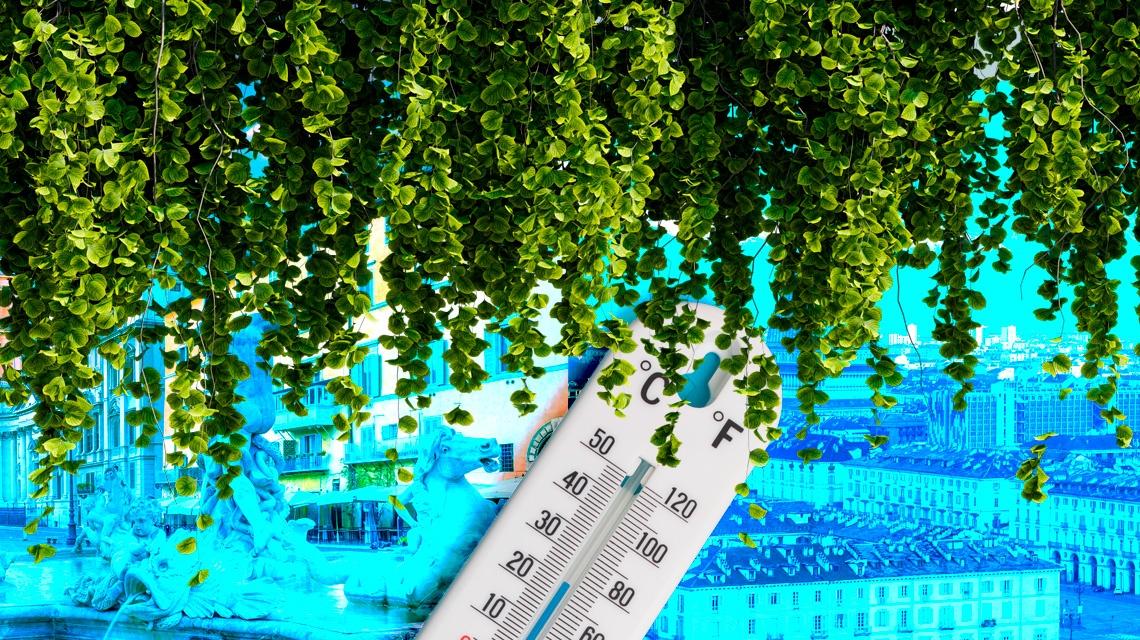Italian National Agency for New Technologies, Energy and Sustainable Economic Development

Environment: green roofs and walls cool by over 1°C urban temperatures in summer
Green coats on buildings reduce urban air temperature by more than 1 °C in summer, as shown by a new ENEA study published in Energy and Buildings. The study evaluated the efficiency of widespread roofs and walls covered with vegetation against heat islands in densely populated urban areas in Rome and Turin in a typical summer day[1].
ENEA researchers at the Energy Efficiency Department simulated three mitigation scenarios characterized by different green combinations. In Rome, the most favorable scenario for reducing temperatures envisaged 12,000 m2 of green roofs combined with 60,000 m2 of green facades, with a 0.33 °C average temperature reduction, with peaks of 1, 17 °C at 3 pm.
“This thermal effect is mainly due to green walls, whose efficacy rises proportionally to the height of the building; extensive green roofs, on the other hand, are ineffective in directly mitigating urban heat when installed on buildings over 20 meters tall, although very useful for reducing indoor air temperature and, consequently, the need for air conditioning”, explained ENEA researcher Tiziana Susca, who worked on the study with Fabio Zanghirella and Vincenzo Del Fatto.
Turin showed a reduction in the external air temperature of about 0.5 °C in two scenarios, which envisaged respectively 6 thousand m2 of living walls[2] and the same number of green walls on the buildings. In both cases the houses were located along an urban canyon [3], parallel to the main wind direction, a condition capable of dissipating the accumulated heat.
“When the same green solutions are used in urban canyons oriented perpendicular to the main wind direction, their efficacy decreases significantly. In fact, the urban heat island mitigation potential depends on many factors like climate, weather, urban geometry, scale of application, technologies and plant species used", said Fabio Zanghirella.
“As concerns plant species, the study used sedum for green roofs, which comprehends various perennial plants easily growing in hot, arid and rocky environments, ivy for facades and common fern for living walls”, said Vincenzo Del Fatto.
The ENEA study showed that during heat waves the different forms of green insulation are slightly less effective than during a typical summer day, as this extreme climate phenomenon reduces the cooling potential of plants, due to the closure of the stomata, the small 'mouths' present on the leaves which allow gaseous exchange between the inside and outside of the plant, favoring in particular the entry of carbon dioxide used for photosynthesis and the escape of oxygen and water vapour.
In 2016, urban areas covered almost 60 million hectares (1.29% of the land surface occupied by built-up areas, pastures and cultivated land) and urban population was 54.4% of the global population. But according to UN estimates this percentage will reach 68.36% by 2050, leading to further urbanization which will modify the natural thermal balance leading to a further increase in urban surface temperatures. Predictions of urban expansion show that, under the current development pathway, based on the use of fossil fuels, Europe is expected to warm by 0.12 °C in summer by 2100 .
Notes
[1] In Turin, the average value of the Urban Heat Island (UHI) for a typical summer day (e.g. 07/27/2014) is 1.1 °C with a peak of 4.4 °C in the early morning hours. On the other hand, during a typical summer day with a heat wave, the average UHI value is 0.9 °C with peaks of 2.4 °C, 2 °C, 1.9 °C and 1.6 °C at 06:00, 00:00, 11:00 and 22:00 respectively. In Rome, during a typical summer day (e.g. 01/07/2015), the average UHI is 2.2 °C with peaks of 3.8 °C, 3.1 °C and 2.9 °C at 06:30, 15:30 and 22:00 respectively. The average UHI during a heat wave (e.g. 07/22/2015) is 1.4°C with peaks of 4.2°C, 3.8°C and 3.0°C at 12 noon :30, 2:30 and 10 respectively.
[2] Vertical garden solutions called living walls are composed of industrially produced panels and modules which incorporate a special irrigation system, mounted on building facades and housing a variety of plants.
[3] An urban canyon is a place where the street is flanked with buildings on both sides creating a canyon-like environment. Urban canyons affect local conditions, including temperature, wind, light and air quality.
